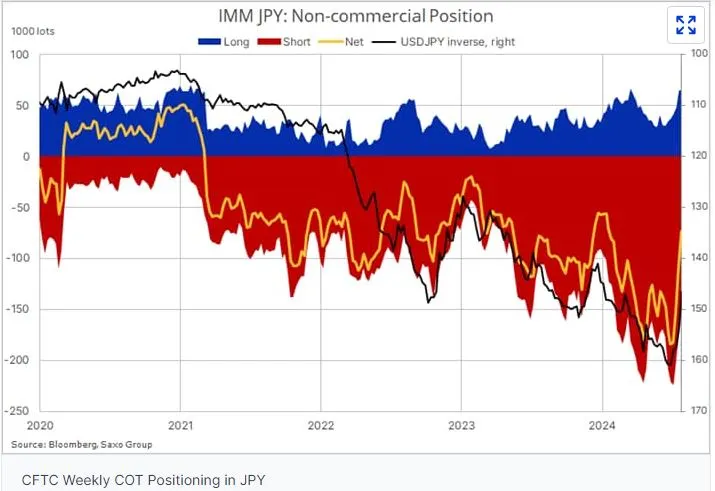The Bank of Japan (BOJ) has once again found itself at the center of global financial attention. Following a rate hike on July 31, markets have been on edge, and the yen has shown significant volatility. With the yen short squeeze in full effect, the Bank of Japan has issued cautious remarks, signaling its intent to avoid further destabilizing actions. This decision has provided some relief to markets but has also raised questions about the future trajectory of Japan’s interest rate policy.
The BOJ’s recent actions and statements come against a backdrop of global economic uncertainty. The central bank’s cautious stance has led to a depreciation of the yen against the dollar, further complicating the already turbulent market landscape. As Japanese equities rebounded, the focus has shifted to how the BOJ’s policies will evolve in the coming months. This article delves into the Bank of Japan’s current position, the ongoing yen short squeeze, and the broader implications for global markets.
The Bank of Japan’s Cautious Stance: A Necessary Move?
The Bank of Japan’s cautious stance is not without reason. Deputy Governor Shinichi Uchida emphasized that the BOJ would refrain from raising interest rates while markets remain unstable. This decision reflects the central bank’s commitment to maintaining stability in the face of heightened global economic risks.
The yen short squeeze, a significant market event, has been driven by a combination of factors. The BOJ’s rate hike was one trigger, but fears of a potential US recession also played a crucial role. As concerns about rapid Federal Reserve rate cuts grew, investors began unwinding their yen-funded carry trades, leading to a sharp appreciation of the yen.
Japanese equities, which had plunged into bear market territory following the BOJ’s rate hike, experienced a sharp rebound after Uchida’s dovish remarks. This rebound highlighted the close relationship between the BOJ’s policies and market sentiment. However, the ongoing yen short squeeze suggests that the situation remains far from resolved.
The Bank of Japan’s decision to maintain a cautious stance may provide temporary stability, but it also raises questions about the long-term outlook. The central bank must carefully navigate the challenges posed by the current economic environment, including the potential for further yen appreciation.
Yen Short Squeeze: A Complex Market Phenomenon
The yen short squeeze is a complex market phenomenon with significant implications for global investors. In essence, a short squeeze occurs when investors who have bet against an asset, in this case, the yen, are forced to buy it back as prices rise. This buying pressure can drive prices even higher, creating a self-reinforcing cycle.
In recent weeks, the yen short squeeze has been driven by a combination of the BOJ’s rate hike and growing concerns about the US economy. The release of disappointing Non-Farm Payroll (NFP) data in the US heightened fears of a recession, leading investors to anticipate rapid Fed rate cuts. These concerns prompted a sharp unwinding of yen-funded carry trades, which had been a popular strategy among global investors.
Carry trades involve borrowing in a low-yielding currency, such as the yen, to invest in higher-yielding assets elsewhere. However, when the funding currency appreciates, as the yen did recently, these trades become less profitable, leading to a rush to exit positions. This rush exacerbated the yen’s appreciation, contributing to the ongoing short squeeze.
The Bank of Japan’s cautious approach aims to mitigate the impact of the yen short squeeze on the broader economy. By avoiding further rate hikes, the BOJ hopes to stabilize the yen and prevent further disruption in Japanese equities and other markets. However, the central bank’s ability to control the situation may be limited by external factors, such as US economic data and Federal Reserve policy decisions.
Interest Rate Policy: The BOJ’s Delicate Balancing Act
The Bank of Japan’s interest rate policy is a delicate balancing act. On the one hand, the central bank must support economic growth and prevent deflation. On the other hand, it must manage the risks associated with a volatile currency and global economic uncertainty.
Uchida’s recent remarks underscore the BOJ’s commitment to a cautious approach. He emphasized that Japan’s economy is not in a situation where the central bank must raise rates at a certain pace to avoid falling behind the curve. Instead, the BOJ can afford to wait for markets to stabilize before making any further decisions on interest rates.
This approach contrasts sharply with the aggressive rate hikes seen in Europe and the United States. In those regions, central banks have been raising rates rapidly to combat inflation. However, Japan’s economic situation is different. The country has struggled with low inflation and sluggish growth for years, making a more measured approach to interest rate policy appropriate.
The Bank of Japan’s decision to prioritize market stability over rate hikes has provided some relief to investors. However, it also means that the central bank may need to act quickly if market conditions deteriorate further. The BOJ’s ability to manage this balancing act will be critical in the coming months as it navigates the challenges posed by the yen short squeeze and other economic uncertainties.
Japanese Equities: Rebound or Temporary Relief?
Japanese equities have experienced a turbulent few weeks, with sharp declines followed by a rapid rebound. The Bank of Japan’s actions and statements have played a significant role in this volatility, as investors react to changes in interest rate policy and currency movements.
The initial sell-off in Japanese equities was triggered by the BOJ’s rate hike on July 31. Investors feared that higher rates would dampen economic growth and corporate profits, leading to a broad-based decline in stock prices. However, Uchida’s dovish remarks provided some relief, sparking a rebound in the market.
Despite this rebound, the outlook for Japanese equities remains uncertain. The yen short squeeze and ongoing concerns about the US economy continue to weigh on investor sentiment. The Bank of Japan’s cautious approach may provide some stability in the near term, but the risk of further volatility remains high.
The relationship between Japanese equities and the yen is particularly important. A stronger yen can hurt export-oriented companies by making their products more expensive in foreign markets. This dynamic is one reason why the BOJ is keen to avoid further yen appreciation. However, if the yen short squeeze continues, it could create additional challenges for the stock market.
Carry Trades: A Strategy Under Pressure
Carry trades have long been a popular strategy among global investors. By borrowing in low-yielding currencies like the yen, investors can invest in higher-yielding assets elsewhere, earning the difference in interest rates. However, this strategy is not without risks, particularly when currency movements are volatile.
The recent yen short squeeze has put significant pressure on carry trades. As the yen appreciated, the profitability of these trades diminished, leading to a rush to exit positions. This unwinding of carry trades contributed to the yen’s rapid appreciation and created further challenges for the Bank of Japan.
The BOJ’s cautious stance is partly aimed at addressing the risks associated with carry trades. By avoiding further rate hikes, the central bank hopes to stabilize the yen and prevent a further unwinding of these trades. However, the global economic environment remains uncertain, and the future of carry trades is far from clear.
The ongoing volatility in the yen and Japanese equities underscores the challenges facing investors who rely on carry trades. While the BOJ’s actions may provide some relief, the risks associated with this strategy are likely to persist as long as uncertainty remains high. Investors must carefully consider these risks as they navigate the current market environment.

Conclusion: The Road Ahead for the Bank of Japan
The Bank of Japan finds itself at a critical juncture. The central bank’s cautious stance has provided some relief to markets, but significant challenges remain. The yen short squeeze, ongoing volatility in Japanese equities, and global economic uncertainty all pose risks to Japan’s economic outlook.
The BOJ’s interest rate policy will play a key role in determining how these risks are managed. By prioritizing market stability, the Bank of Japan hopes to navigate these challenges without causing further disruption. However, the central bank’s ability to control the situation will depend on a range of external factors, including US economic data and Federal Reserve policy decisions.
As the Bank of Japan continues to monitor the situation, investors will need to stay vigilant. The risks associated with the yen short squeeze, carry trades, and Japanese equities are likely to persist in the coming months. The BOJ’s cautious approach may provide some stability, but the road ahead is uncertain. In this environment, careful analysis and a clear understanding of the risks will be essential for navigating the challenges that lie ahead.
Click here to read our latest article Gold Price Surges to Record High




